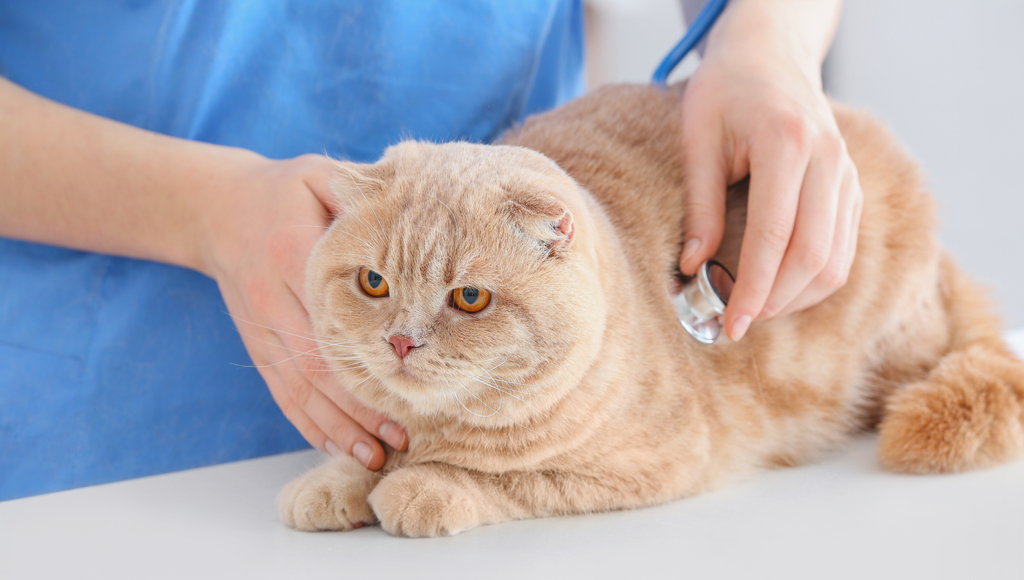Is Pet Insurance Right For You?
Whether you recently welcomed a new pet into your home or you have a longtime pet that is developing age-related medical issues, there are a number of reasons you might be considering pet insurance.

Skip to: Pet Insurance, Defined | The History of Pet Insurance | Why Should Pet Owners Consider Pet Insurance | What Does Pet Insurance Cover? | Pet Insurance Exclusions | How Much Does Pet Insurance Cost? | Pros and Cons | Key Definitions
Pet Insurance, Defined
Pet insurance, or pet health insurance, is an insurance policy that is purchased by a pet owner to defray the cost of veterinary care.
In many ways, pet health insurance is similar to human health insurance. You pay a monthly premium in exchange for some degree of coverage of your pet’s medical expenses. Like human health insurance, most pet insurance policies have a deductible, which is an out-of-pocket expense that must be exceeded before insurance coverage kicks in. Additionally, pet insurance policies are similar to human health insurance in that different policies offer different degrees of coverage. Some policies cover a large percentage of a wide variety of expenses, while other policies are more limited in coverage.
Although there are similarities between pet health insurance and human health insurance, there are also key differences. Unlike human health insurance, in which the insurance provider may pay your medical provider directly, pet insurance typically functions on a reimbursement model. You, the pet owner, pay your pet’s medical expenses; then, you submit receipts to the insurance provider and receive reimbursement for the approved portion of your claim. Also, while most human health insurance policies cover preventive care (such as wellness exams and vaccines), preventive care is not automatically covered by pet insurance policies. Finally, pet insurance does not restrict you to a specific healthcare provider in the way that some human health insurance does. You don’t need to find a practice that accepts your pet insurance, because you will be paying for your pet’s care personally and only seeking reimbursement from your pet insurance.
The History of Pet Insurance
Pet insurance was initially developed in Europe and is still a popular product in many European countries. The first pet insurance policy, created to protect livestock, originated in Sweden in 1890. Over thirty years later, in 1924, the first companion animal pet insurance policy was issued, for a pet dog in Sweden. As you might expect, based on early interest, Sweden is still a widespread utilizer of pet insurance and approximately 40% of dogs in Sweden are covered by pet insurance. Pet insurance spread to Britain in 1947 and approximately 25% of British pets are now covered by pet insurance.
The first pet insurance provider in the United States, Veterinary Pet Insurance (VPI), was founded in 1980. In the following years, an increasing number of pet insurance providers entered the United States market and, in 2007, the North American Pet Health Insurance Association (NAPHIA) was founded to establish professional standards within the pet insurance industry. Despite widespread availability of pet insurance in the United States, however, just over 1% of dogs and cats in the United States are currently insured.
Why Should Pet Owners Consider Pet Insurance?
While pets are valuable members of any family, their care can also be expensive. According to Petplan, a Philadelphia-based insurance provider, the average cost of an unexpected veterinary bill is $800-1,500. This is a significant expense, which is even more concerning when you consider the financial state of most Americans. According to a 2018 study, approximately 39% of Americans would be unable to cover even a $400 emergency expense without taking out a loan, paying the bill off over time, borrowing money, or selling belongings. Nearly 12% of people have no way to cover a $400 bill.
While financial stress can be challenging enough, think of encountering this scenario when your pet is in an emergency situation. According to Dr. Catherine Barnette, a veterinarian based in North Carolina, “it’s not uncommon to be faced with a pet in need of emergency care and an owner who can’t afford that care due to financial limitations.” She goes on to add “even though all of us in the veterinary field would love to be able to help every pet and owner, the reality is that veterinary medicine is a business and we can’t remain employed if we routinely give away services. While no one likes to think of being faced with the decision of whether or not to pursue life-saving treatment for their pet, having pet insurance can make this decision an easier one for pet owners.
What Does Pet Insurance Cover?
Coverage varies significantly between pet insurance providers and between individual policies. Unlike human health insurance, which offers a relatively consistent set of coverage due to the Affordable Care Act, there are no similar legal regulations governing pet insurance. Therefore, each insurance provider can set the conditions associated with their insurance policies. When comparing pet insurance policies, it’s important to read all policy documents carefully.
Most pet insurance policies offer coverage for both accidents and illness. If your pet breaks a leg, receives a bite wound, or is hit by a car, treatment would be covered under the policy’s accident coverage. If your pet requires treatment for diarrhea, cancer, diabetes, or kennel cough, that treatment is covered under the policy’s illness coverage. Although most policies cover both accidents and illnesses, some pet insurance providers also offer accident-only coverage. Although this coverage is will only cover a limited number of conditions, some pet owners select it as a more affordable insurance option.
A typical pet insurance policy does not cover wellness care, such as annual examinations, vaccines, heartworm testing, fecal parasite testing, and dental cleanings. However, wellness coverage is available as an optional add-on through some pet insurance providers. If you’re considering pet insurance with wellness coverage, it’s important to look closely at your anticipated annual veterinary costs to determine whether this coverage is a good value. Some veterinary practices offer their own wellness plans that are separate from insurance, charging a monthly fee that covers all recommended preventive care. If your veterinarian offers this option, compare the price and value of the practice wellness plan to the wellness add-ons offered by pet insurance providers.
Unlike human health insurance, pet insurance does not cover pre-existing conditions. If your pet has a history of heart disease, skin allergies, or other medical problems, any tests and treatment related to those conditions may be excluded from coverage. Therefore, if you’re interested in pet insurance, it’s best to enroll your pet at an early age, before health issues begin to develop.
Many pet insurance providers also exclude hereditary conditions from coverage. If you obtain pet insurance for your German Shepherd through Nationwide insurance, for example, and your dog later goes on to develop degenerative myelopathy, exocrine pancreatic insufficiency, or pannus, those conditions will not be covered by your insurance policy. If you have a purebred dog, review hereditary condition exclusions before committing to a policy.
Pet Insurance Exclusions
Pet insurance policies typically exclude two types of conditions: pre-existing conditions and hereditary or congenital conditions. Insurers do this in order to avoid paying out large sums related to the care of these conditions and, in theory, the savings is passed on to policyholders. While this approach makes sense on the surface, it’s important to have a good understanding of what types of conditions fall into these categories. This will help minimize surprises with your pet insurance coverage.
Pre-existing conditions are conditions that are observed or diagnosed before you purchase pet insurance. There are two categories of pre-existing conditions: curable pre-existing conditions and chronic pre-existing conditions. These two types of pre-existing conditions may be handled differently, depending upon your insurance provider. A curable pre-existing condition, such as an ear infection or a urinary tract infection, may be eligible for insurance coverage, after a waiting period. A chronic pre-existing condition, in contrast, is extremely unlikely to ever be covered by a pet insurance policy. Chronic conditions, such as allergic skin disease, diabetes, hip dysplasia, and cancer, typically require ongoing care that you will have to pay for out-of-pocket.
Pet insurance providers learn about pre-existing conditions by requiring a veterinary exam prior to issuing coverage. They will request a copy of your pet’s medical records and may require your veterinarian to fill out a patient information sheet. This helps to ensure that pre-existing conditions are detected prior to coverage being issued. The best way to minimize pre-existing condition exclusions in your pet’s insurance is to start insurance at an early age, before your pet has any documented illnesses.
Hereditary conditions are caused by genes that are passed down to a puppy or kitten by its parents. These conditions may be apparent before you purchase your pet’s insurance policy, or they may not make themselves known until later in life. Examples of hereditary conditions include hip dysplasia, elbow dysplasia, degenerative myelopathy, cardiomyopathy, and intervertebral disk disease (IVDD). Each pet insurance provider typically maintains a list of hereditary conditions for each breed; if your pet develops one of these conditions, it may not be covered by your insurance policy. Some providers do not offer any coverage for hereditary conditions, while others cover them as long as they were not apparent at the time the policy was issued. Some providers allow you to purchase an optional rider, at an additional cost, that allows for the coverage of hereditary conditions.
Having a pre-existing or hereditary condition should not mean that your pet is completely ineligible for pet insurance. What it does mean, however, is that insurance providers may refuse to cover specific conditions that they determine to be pre-existing or hereditary in nature. Over your pet’s lifetime, these pre-existing or hereditary conditions can become expensive to treat, so it is important to be prepared for this possibility when purchasing pet insurance.
How Much Does Pet Insurance Cost?
The cost of pet insurance can vary significantly, depending on the provider and the level of coverage that you select. Just like in human health insurance or car insurance, low deductibles and more comprehensive coverage are available at a higher cost, while lower-cost insurance policies may have higher deductibles and more limited coverage.
The cost of pet insurance will also depend on the unique characteristics of your pet. Larger pets require higher medication doses than smaller pets, so pet insurance for a large breed dog is typically more expensive more than pet insurance for a small-breed dog. Additionally, some breeds are more prone to develop expensive medical conditions than other breeds and this will be reflected in insurance costs. Older pets will cost more to insure than younger pet and costs may also vary depending on your area of the country (depending on veterinary costs and health risks in your area).
Once you have selected a pet insurance provider and determined your preferred level of coverage, your premium costs will be calculated. There are a number of different factors that go into this calculation, including the following:
- Your pet’s age
- Your pet’s species
- Your pet’s size
- Your pet’s breed
- Your location
In general, anything that could make your pet more expensive to care for will cause an increase in your pet insurance premiums. Elderly pets, for example, are more susceptible to expensive medical conditions than young adults; therefore, pet insurance premiums typically increase with age. Dogs are more likely to develop medical conditions than cats, which means they are more expensive to insure. Large-breed dogs require larger medication doses than small-breed dogs, in addition to being susceptible to a greater number of orthopedic conditions; therefore, premiums are often higher for large-breed dogs. Certain breeds are more likely to develop expensive medical conditions than others, which will be reflected in your premiums. Finally, even your location influences your premiums. Not only are there location-dependent health risks (for example, a dog living in Mississippi is at far greater risk of heartworm disease than a dog living in Alaska), but the cost of veterinary care can also vary significantly based on a location’s cost of living. All of these factors influence the cost of your pet’s medical care. Therefore, all of these factors influence pet insurance premiums.
Pros and Cons of Pet Insurance: A Summary
Ultimately, it’s up to you to determine whether pet insurance is a good fit for you and your family. When doing so, consider the following potential pros and cons of pet insurance.
Advantages of pet insurance:
- Helps defray unexpected medical expenses
- Allows you to authorize the best possible care, regardless of your finances
- Allows you to choose between a number of coverage levels, with varying premiums
- Affordable if started at an early age
Disadvantages of pet insurance:
- Does not cover pre-existing conditions
- May exclude coverage for hereditary conditions
- Per-incident or annual limits may limit care that is covered
- Often expensive for large-breed dogs or older pets
Weigh the pros and cons of individual pet insurance policies against the alternatives, in order to determine whether pet insurance is a good fit for you and your family.
Key Pet Insurance Definitions
As you evaluate and compare pet insurance policies, it’s important to be familiar with the following key words and phrases.
Premium is the monthly cost of a pet insurance policy. In general, a policy with a higher premium will provide more comprehensive coverage, while a policy with a lower premium will offer more limited coverage.
Deductible is the amount that you are responsible for paying before your pet insurance plan will begin to reimburse expenses. Annual deductibles are common, similar to human health insurance. In some cases, however, your policy may have a per-incident deductible. This means that if a health issue spans multiple years, you may not need to pay the deductible every year.
Reimbursement is the percentage of your medical expenses that are reimbursed after you have met your deductible. Depending on the policy, your plan may reimburse anywhere from 60% to 100% of your expenses after you have met your deductible.
Per-incident limit is the maximum amount that can be reimbursed for a given illness or accident. Anything above that limit is your financial responsibility. While these limits are less of a concern in young pets, they can become significant in aging pets that are more likely to develop serious, ongoing medical issues.
Annual limit is similar to per-incident limits, but applies to the entire year. If your pet experiences multiple illnesses or accidents within a year, you could exceed your annual limit even if you do not exceed your per-incident limits. This means that all expenses above the annual limit would be your responsibility.
Alternative therapy is a term used to describe treatments that fall outside of the realm of traditional veterinary medicine. Examples include acupuncture, hydrotherapy, chiropractic care, herbal medicine, and therapeutic laser treatments.
A benefit schedule is a document that lists a specific fixed payout for each specific veterinary condition included in the benefit schedule. While many pet insurance providers reimburse a set percentage of a covered pet’s medical expenses, other insurance providers reimburse pet owners according to a fixed benefit schedule.
A hereditary condition is one that is caused by a genetic defect. In many cases, these conditions are not covered by a typical pet insurance policy.
Pre-existing conditions are conditions that were evident before the pet insurance policy was in place. These conditions may be either curable (such as a one-time bacterial infection) or chronic (such as allergies or cancer).
Renewal occurs at the end of a pet insurance policy, when the policy renews for the following year. In most cases, renewal resets the deductible and out-of-pocket maximum. Your insurance premium may increase at renewal.
Waiting period states how long an insurance policy must be in effect before veterinary care is covered under the insurance policy. Many pet insurance policies carry separate waiting periods for accidents, illness, and orthopedic conditions. Medical issues that arise before the end of the policy’s waiting period are not covered.
Policy year is the period in which your pet insurance coverage is active. In most cases, your policy year extends 365 days from the date on which the insurance coverage was purchased.
Ready to start saving money on pet wellness care?
Then take a look at Mint Wellness, the pet wellness plan that provides fast reimbursement on routine pet care. Save on vaccinations, wellness exams, preventatives, dental, and more!
Learn More


